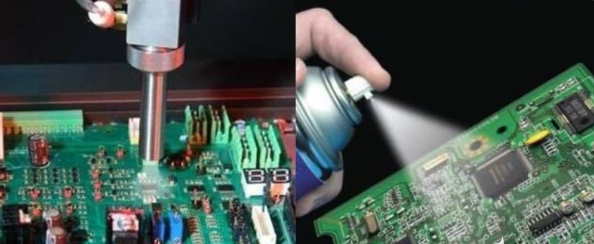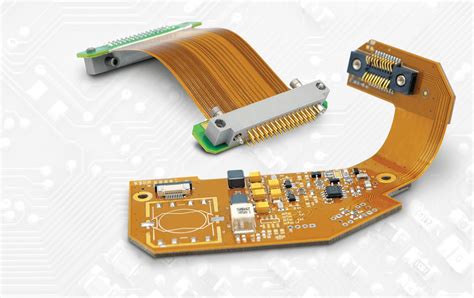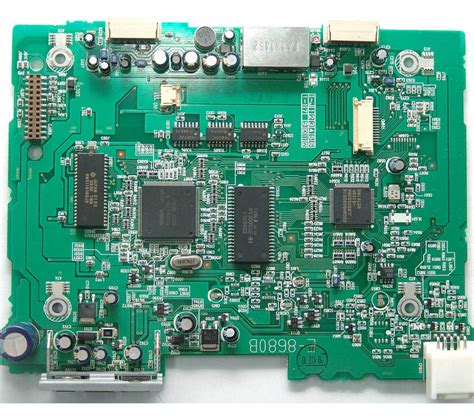Flex pcb lpi
Advantages Of Using LPI In Flex PCB Manufacturing
In the realm of modern electronics, the demand for compact, efficient, and reliable devices has led to significant advancements in printed circuit board (PCB) technology. Among these innovations, flexible PCBs have emerged as a pivotal component, offering unparalleled versatility and adaptability. A critical aspect of manufacturing these flexible circuits is the application of Liquid Photoimageable Solder Mask (LPI), which provides numerous advantages that enhance the performance and durability of the final product.
To begin with, one of the primary benefits of using LPI in flex PCB manufacturing is its superior protective capabilities.
LPI serves as a robust barrier against environmental factors such as moisture, dust, and chemical contaminants, which can otherwise compromise the integrity of the circuit. By forming a protective layer over the copper traces, LPI significantly reduces the risk of corrosion and oxidation, thereby extending the lifespan of the PCB. This protective quality is particularly crucial in applications where the PCB is exposed to harsh conditions, such as in automotive or industrial environments.
Moreover, LPI offers excellent thermal resistance, which is essential for maintaining the stability of flexible PCBs under varying temperature conditions.
As electronic devices continue to shrink in size while increasing in functionality, the heat generated during operation can pose a significant challenge. LPI’s ability to withstand high temperatures ensures that the flexible PCB can operate efficiently without the risk of thermal degradation. This thermal resilience not only enhances the reliability of the device but also contributes to its overall performance.
In addition to its protective and thermal properties, LPI provides exceptional electrical insulation.
This characteristic is vital in preventing short circuits and ensuring that the electrical signals within the PCB are transmitted accurately and efficiently. The precise application of LPI allows for the creation of fine lines and spaces, which is particularly beneficial in high-density circuit designs. This precision contributes to the miniaturization of electronic devices, enabling manufacturers to meet the ever-growing demand for smaller and more powerful gadgets.
Furthermore, the use of LPI in flex PCB manufacturing facilitates improved design flexibility.
The liquid nature of LPI allows it to conform to the intricate shapes and contours of flexible substrates, ensuring uniform coverage and adhesion. This adaptability is crucial in applications where the PCB must bend or flex during operation, such as in wearable technology or foldable devices. By maintaining its integrity even under mechanical stress, LPI ensures that the flexible PCB can perform reliably in dynamic environments.
Another notable advantage of LPI is its cost-effectiveness.
Compared to other solder mask options, LPI offers a balance between performance and affordability, making it an attractive choice for manufacturers. The efficient application process of LPI reduces production time and minimizes material waste, leading to lower manufacturing costs. This economic benefit, coupled with its technical advantages, makes LPI a preferred option in the competitive electronics market.
In conclusion, the integration of Liquid Photoimageable Solder Mask in flex PCB manufacturing presents a multitude of advantages that enhance the functionality, durability, and cost-efficiency of electronic devices. Its protective, thermal, and electrical properties, combined with its design flexibility and economic viability, make LPI an indispensable component in the production of modern flexible circuits. As technology continues to evolve, the role of LPI in advancing PCB manufacturing will undoubtedly remain significant, driving innovation and excellence in the electronics industry.
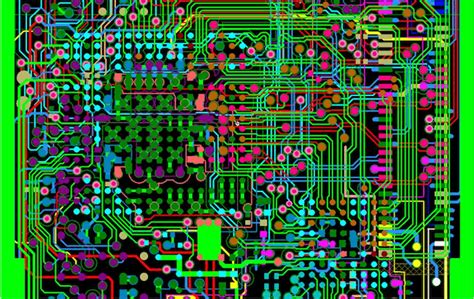
Common Challenges In Applying LPI To Flex PCBs
In the realm of modern electronics, flexible printed circuit boards (flex PCBs) have emerged as a pivotal component, offering versatility and adaptability in various applications. However, the application of liquid photoimageable solder mask (LPI) to flex PCBs presents a unique set of challenges that manufacturers must navigate to ensure optimal performance and reliability. Understanding these challenges is crucial for achieving the desired outcomes in the production of flex PCBs.
One of the primary challenges in applying LPI to flex PCBs is the inherent flexibility of the substrate material.
Unlike rigid PCBs, flex PCBs are designed to bend and twist, which can complicate the application of LPI. The flexibility of the substrate can lead to issues such as cracking or delamination of the solder mask during the bending process. To mitigate these risks, manufacturers must carefully select LPI materials that possess the necessary elasticity and adhesion properties to withstand the mechanical stresses associated with flexing.
Moreover, the surface topography of flex PCBs can pose additional challenges.
Flex PCBs often feature intricate patterns and varying surface heights, which can make it difficult to achieve uniform LPI coverage. Inconsistent application of the solder mask can result in exposed copper traces, leading to potential short circuits or corrosion. To address this issue, manufacturers may employ advanced coating techniques, such as spray coating or curtain coating, to ensure even distribution of the LPI across the complex surface of the flex PCB.
Another significant challenge is the thermal management during the curing process of the LPI. Flex PCBs are typically made from materials that have lower thermal resistance compared to their rigid counterparts
. As a result, the curing process must be carefully controlled to prevent damage to the substrate. Excessive heat can cause warping or distortion of the flex PCB, compromising its functionality. Therefore, manufacturers must optimize the curing parameters, such as temperature and duration, to achieve a balance between effective curing of the LPI and preservation of the substrate integrity.
In addition to these technical challenges, environmental factors can also impact the application of LPI to flex PCBs.
Humidity and temperature variations in the manufacturing environment can affect the viscosity and drying time of the LPI, leading to inconsistencies in the final product. To counteract these effects, manufacturers often implement stringent environmental controls within their production facilities, ensuring stable conditions that facilitate the consistent application of the solder mask.
Furthermore, the selection of appropriate LPI materials is critical in overcoming these challenges.
Manufacturers must consider factors such as chemical resistance, flexibility, and adhesion properties when choosing an LPI for flex PCBs. The right material can significantly enhance the durability and performance of the solder mask, reducing the likelihood of defects and failures in the final product.
In conclusion, while the application of LPI to flex PCBs presents several challenges, a thorough understanding of these issues and the implementation of strategic solutions can lead to successful outcomes. By addressing the unique properties of flex PCBs and optimizing the application process, manufacturers can ensure the reliability and longevity of their products, ultimately meeting the demands of an ever-evolving electronics industry.
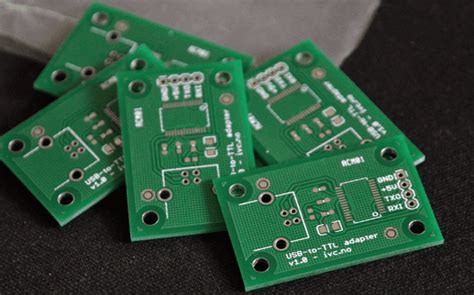
Innovations In LPI Technology For Flexible PCBs
In recent years, the field of electronics has witnessed significant advancements, particularly in the realm of flexible printed circuit boards (PCBs). Among these innovations, the development of Liquid Photoimageable (LPI) solder masks for flexible PCBs stands out as a pivotal breakthrough. This technology has not only enhanced the performance and reliability of flexible circuits but has also expanded their application across various industries. As we delve into the intricacies of LPI technology, it becomes evident that its impact on flexible PCBs is both profound and far-reaching.
To begin with, the primary function of a solder mask in PCB manufacturing is to protect
the copper circuitry from oxidation and prevent solder bridges during the assembly process. Traditionally, flexible PCBs utilized coverlay films for this purpose. However, these films often posed limitations in terms of design flexibility and miniaturization. Enter LPI technology, which offers a more adaptable and precise solution. By employing a liquid photoimageable material, manufacturers can achieve finer resolution and more intricate designs, which are essential for modern electronic devices that demand compact and complex circuitry.
Moreover, the application of LPI solder masks on flexible PCBs is facilitated by advanced photolithography techniques.
This process involves coating the flexible substrate with a liquid photoimageable material, which is then exposed to ultraviolet light through a photomask. The exposed areas harden, while the unexposed regions are washed away, leaving a precise pattern that conforms to the desired circuit design. This method not only ensures high accuracy but also allows for rapid prototyping and production, thereby reducing time-to-market for new electronic products.
In addition to design precision, LPI technology offers enhanced thermal and chemical resistance, which is crucial for the durability of flexible PCBs.
As electronic devices become more powerful, they generate more heat, necessitating materials that can withstand higher temperatures without degrading. LPI solder masks provide this resilience, ensuring that flexible PCBs maintain their integrity even under demanding conditions. Furthermore, their chemical resistance protects the circuitry from harsh environmental factors, thereby extending the lifespan of the device.
Another significant advantage of LPI technology is its contribution to the miniaturization of electronic components.
As consumer demand for smaller, more portable devices grows, the need for compact and efficient circuitry becomes paramount. LPI solder masks enable the production of thinner and lighter flexible PCBs, which are essential for applications in wearable technology, medical devices, and other cutting-edge fields. This miniaturization does not compromise performance; rather, it enhances the functionality and versatility of the devices.
As we consider the broader implications of LPI technology for flexible PCBs, it is clear that this innovation is driving the evolution of electronics.
By offering superior design flexibility, enhanced durability, and support for miniaturization, LPI solder masks are paving the way for new possibilities in electronic design and manufacturing. Industries ranging from consumer electronics to aerospace are poised to benefit from these advancements, as they seek to develop more sophisticated and reliable products.
In conclusion, the integration of LPI technology into flexible PCB manufacturing represents a significant leap forward in the electronics industry. As this technology continues to evolve, it promises to unlock new potential and redefine the boundaries of what is possible in electronic design. The future of flexible PCBs, bolstered by LPI innovations, is indeed bright, heralding a new era of technological progress and innovation.

Best Practices For LPI Application On Flex PCBs
In the realm of modern electronics, the application of Liquid Photoimageable Solder Mask (LPI) on flexible printed circuit boards (PCBs) is a critical process that demands precision and expertise. As flexible PCBs continue to gain traction due to their adaptability and space-saving benefits, understanding the best practices for LPI application becomes increasingly important. This process not only protects the circuitry but also enhances the overall reliability and performance of the electronic device.
To begin with, it is essential to recognize the unique characteristics of flexible PCBs.
Unlike their rigid counterparts, flexible PCBs are designed to bend and twist, which necessitates a different approach to LPI application. The first step in ensuring a successful LPI application is to thoroughly clean the surface of the flexible PCB. Any contaminants, such as dust or oils, can impede the adhesion of the LPI, leading to potential defects. Therefore, employing a meticulous cleaning process, often involving both chemical and mechanical methods, is crucial.
Following the cleaning process, the next step involves the application of the LPI itself.
It is imperative to select an LPI material that is specifically formulated for flexible substrates. This ensures that the solder mask can withstand the mechanical stresses associated with bending and flexing. Moreover, the application method should be carefully chosen to suit the specific design and requirements of the flexible PCB. Techniques such as screen printing or spray coating are commonly used, each offering distinct advantages depending on the complexity and size of the board.
Once the LPI is applied, the curing process is of paramount importance.
Proper curing ensures that the solder mask adheres firmly to the substrate and provides the necessary protection. Typically, this involves exposing the LPI to ultraviolet (UV) light, which initiates a chemical reaction that hardens the material. It is vital to control the exposure time and intensity of the UV light to achieve optimal results. Inadequate curing can lead to issues such as poor adhesion or incomplete coverage, which can compromise the functionality of the PCB.
In addition to the technical aspects of LPI application, it is also important to consider the environmental factors that can influence the process.
Temperature and humidity levels in the manufacturing environment can affect the viscosity and drying time of the LPI. Therefore, maintaining a controlled environment is essential to ensure consistency and quality in the application process. Furthermore, regular monitoring and calibration of equipment can help in maintaining the precision required for high-quality LPI application.
Finally, it is crucial to conduct thorough inspections and testing after the LPI application.
This includes visual inspections to identify any surface defects, as well as electrical testing to ensure that the solder mask does not interfere with the circuit’s performance. By implementing a robust quality control process, manufacturers can identify and rectify any issues early in the production cycle, thereby reducing the risk of costly rework or product failures.
In conclusion, the application of LPI on flexible PCBs is a complex process that requires careful attention to detail and adherence to best practices.
By understanding the unique challenges posed by flexible substrates and employing appropriate techniques and materials, manufacturers can ensure the production of reliable and high-performing electronic devices. As the demand for flexible PCBs continues to grow, mastering these best practices will be essential for staying competitive in the ever-evolving electronics industry.

